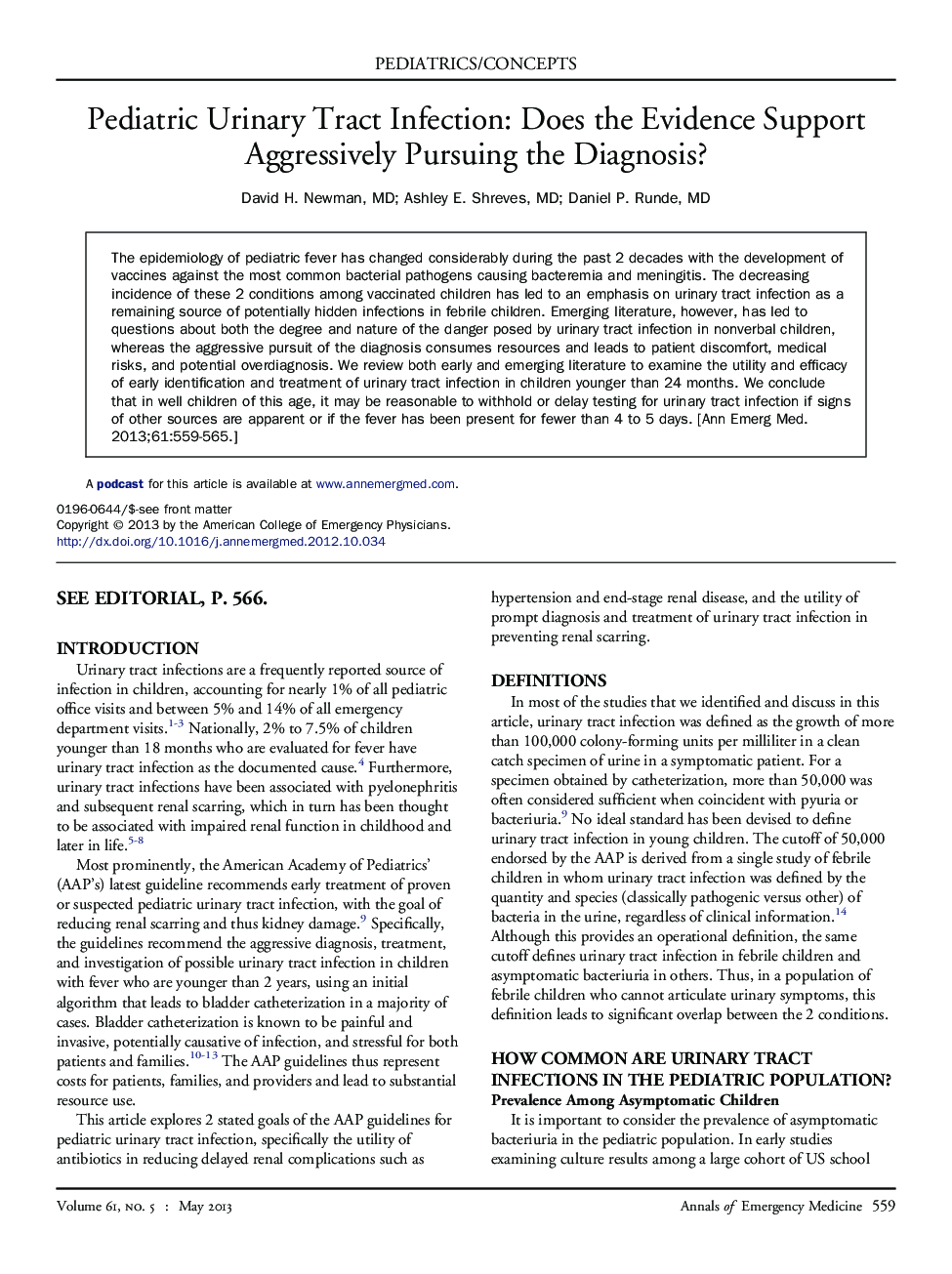| Article ID | Journal | Published Year | Pages | File Type |
|---|---|---|---|---|
| 6081415 | Annals of Emergency Medicine | 2013 | 7 Pages |
Abstract
The epidemiology of pediatric fever has changed considerably during the past 2 decades with the development of vaccines against the most common bacterial pathogens causing bacteremia and meningitis. The decreasing incidence of these 2 conditions among vaccinated children has led to an emphasis on urinary tract infection as a remaining source of potentially hidden infections in febrile children. Emerging literature, however, has led to questions about both the degree and nature of the danger posed by urinary tract infection in nonverbal children, whereas the aggressive pursuit of the diagnosis consumes resources and leads to patient discomfort, medical risks, and potential overdiagnosis. We review both early and emerging literature to examine the utility and efficacy of early identification and treatment of urinary tract infection in children younger than 24 months. We conclude that in well children of this age, it may be reasonable to withhold or delay testing for urinary tract infection if signs of other sources are apparent or if the fever has been present for fewer than 4 to 5 days.
Related Topics
Health Sciences
Medicine and Dentistry
Emergency Medicine
Authors
David H. MD, Ashley E. MD, Daniel P. MD,
